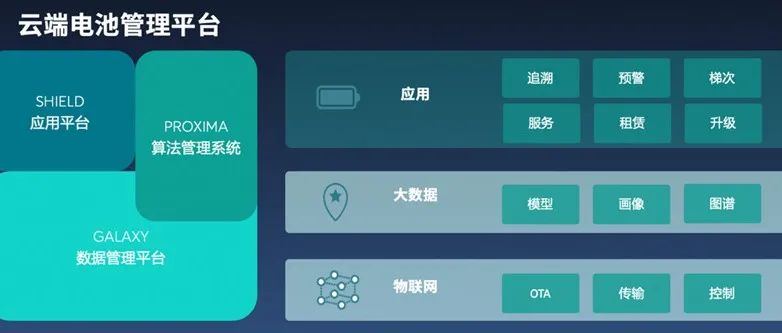Author: Zhu Yulong
Recently, some friends and I discussed the trend in battery management systems and electrical design within the battery system. We all agree that in the process of technological evolution, the dominant power is shifting towards vertically integrated companies (car companies are starting to make batteries, battery companies are starting to make CTC integrated chassis and domain controllers).
With the need for high-capacity batteries compatible with 400V and 800V, there is a new trend for intelligent power distribution design, which brings changes to the battery management system functional decomposition scheme.
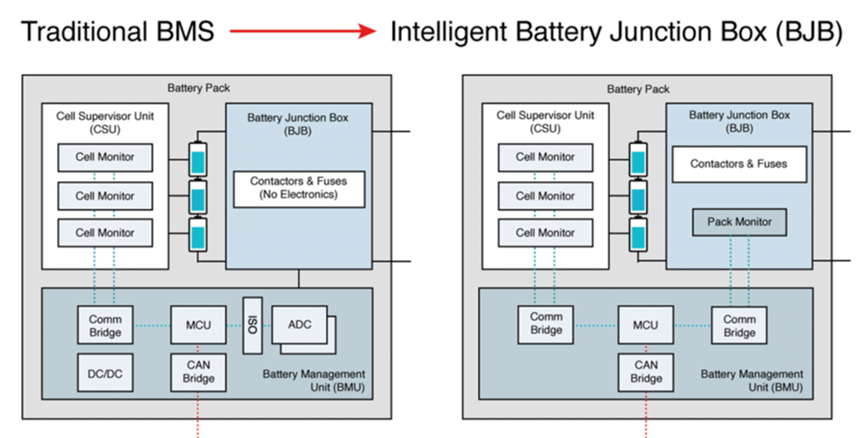
Intelligent Distribution Design
This intelligent power distribution design can be traced back to the PHEV system design in Europe, as shown in the following figure:
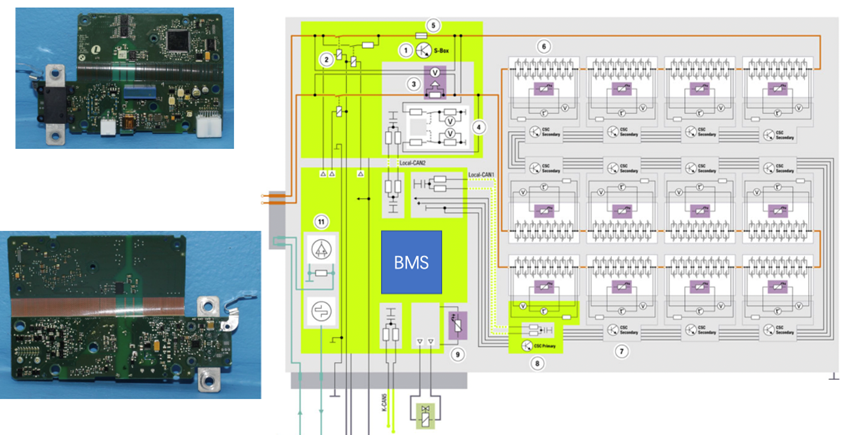
With the main functions of the battery management system (BMS), from basic monitoring of cell voltage, battery pack voltage, and battery pack current to monitoring the voltage and temperature of each cell, gradually storing and transmitting it to the cloud for big data analysis, the overall system design of the entire battery management system can be simplified.
Figure 1 shows that in the traditional battery management system BMS architecture, the battery management system is placed on the high-voltage side, and the internal main control MCU includes all the sampling functions, including high-voltage side voltage sampling, insulation impedance sampling, and current sampling. The electrical distribution box (BJB) only contains high-voltage contactors, fuses (thermal meltable), and current sensors. From the perspective of the overall system layout, the difficulty of high-voltage acquisition cable layout is relatively higher, and the high-voltage sampling points of multiple contactors all need to be connected to the BMU, and the BJB needs to be connected to the isolation module converter ADC through cables.
With the development of CTP, the system design needs to consider compatibility with 400V and 800V. Due to the demand for fast charging, the entire current range is getting higher, and the use of Pyro-fuse needs to be imported. How to reduce BMS system space and simplify the entire harness layout has become the main consideration direction for design.The smart junction box (BJB) for electric vehicles, which became popular a few years ago, is located to the right of Figure 1. The BJB has a dedicated battery pack monitor inside, which can measure all voltages and currents, and transmit the information to the MCU through a serial communication protocol. The main advantage of this smart BJB is that it can simplify the wiring harness and optimize the wiring for nearby design. It can measure the voltage and current on the high-voltage side and simplify the entire software and hardware design. The same series of devices can be used to complete the single-cell voltage sampling and high-voltage current sampling, and their architecture and registers are also very similar. They can synchronize battery pack voltage and current measurements, reducing the difficulty of SOC calculation.
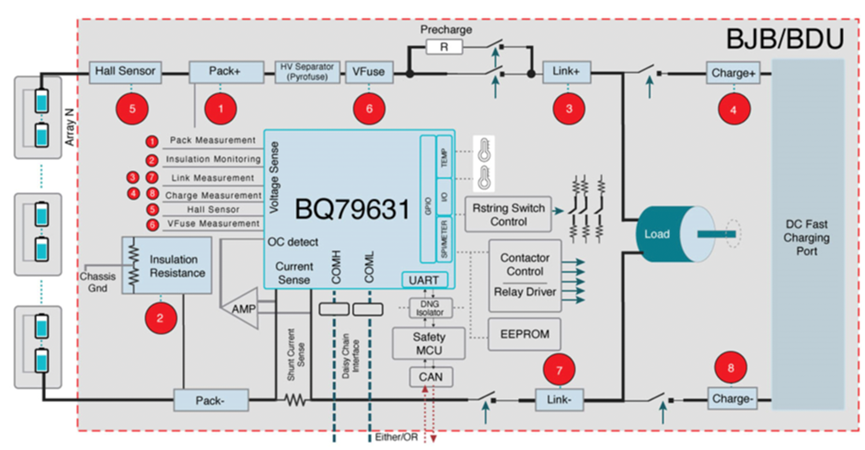
Figure 3 is a typical reference design that uses the TI BQ79631-Q1 to measure high-voltage, current, and temperature at different locations. Voltage on the high-voltage side is sampled using a voltage divider resistor, and temperature is sampled on the shunt resistor. In the case of longer durations for high-current fast charging, the MCU can easily perform temperature compensation. When higher functional safety level requirements are needed for current sampling, the system can also use Hall effect sensors to achieve isolated sampling of current.

In the cloud-based battery management system, synchronized sampling information on single-cell voltage, pack voltage, and current becomes critical for long-term data analysis. Based on in-depth analysis of this data, the true differences between each cell and the entire battery system can be evaluated in the background to determine the long-term characteristics of the battery by calculating battery impedance.
The specific time interval for sampling is called the synchronization interval, and the smaller the synchronization interval, the more accurate the power estimation or impedance estimation will be. From the perspective of battery management systems and cloud-based analysis, it is necessary to control the delay in voltage and current sampling within 1ms. The main difficulties in meeting this requirement are:
1) All battery monitors and battery pack monitors have different clock sources, and the signal acquisition process itself is asynchronous.
2) In an 800V battery system, the number of connected battery monitors is greatly increased, each of which can measure 6 to 18 cells, and the data length of each cell is 16 bits. The transmission of a large amount of data through the daisy chain communication interface consumes the time budget required for voltage and current synchronization.
3) The filters for voltage and current sampling can affect signal delay, causing delay in voltage and current synchronization.From this perspective, the selection of battery monitoring chips is very important. TI’s BQ79616-Q1, BQ79614-Q1 and BQ79612-Q1 can maintain time synchronization by sending ADC start-up commands to battery monitors and battery pack monitors, and compensate for propagation delays caused by transmitting ADC start-up commands through Daisy Chain Link port by supporting delayed ADC sampling.
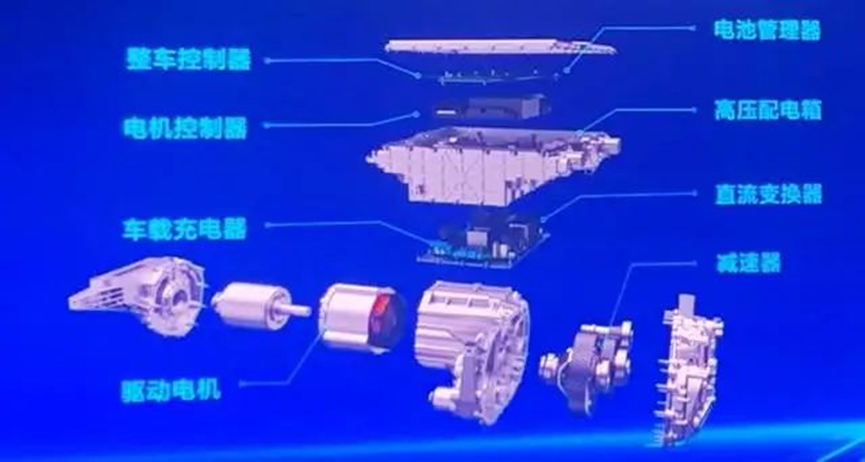
Summary: With the main architecture of battery management shifting from BMS itself to three-electric domain controllers and even vehicle domain controllers, the whole system design needs to be simplified to reduce the complexity of BMS and improve system safety. After simplifying the design, the new scheme can improve the accuracy of voltage and current sampling, and through effective voltage and current synchronization technology, it can accurately calculate the battery operating status, charging status and battery impedance.
This article is a translation by ChatGPT of a Chinese report from 42HOW. If you have any questions about it, please email bd@42how.com.
